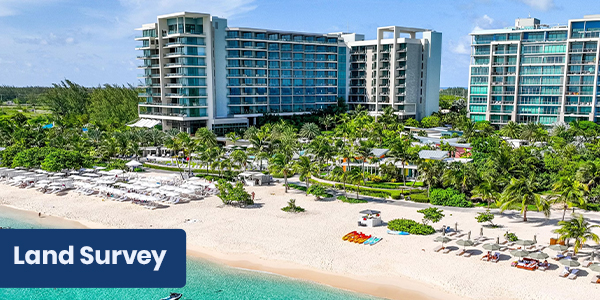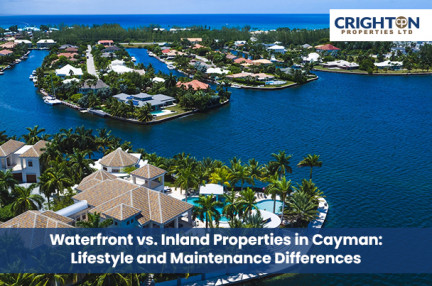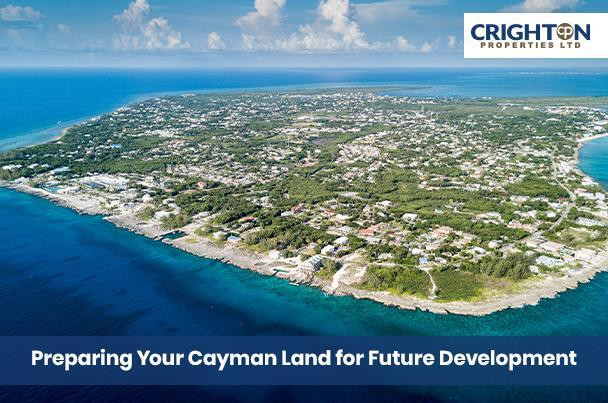Owning a piece of land in the Cayman Islands is more than just an investment in paradise; it is a doorway to future opportunities that stretch across generations. Whether you are a long-term landowner or a recent investor, land represents both stability and potential. The Cayman Islands, known for its political stability and strong economy, offers an environment where real estate becomes a dependable store of value.
Yet turning a parcel of land into a thriving development requires more than imagination; it demands preparation, foresight, and a careful respect for both regulations and the natural environment.
A thorough approach on getting Cayman land ready for future development may be found in this blog. The legal and regulatory frameworks, necessary due diligence procedures, financial planning, environmental factors, and market knowledge will all be covered. By the time it's all over, you'll know what it takes to get your land ready and feel secure about the way forward.
Development in Cayman Landscape
Before moving forward with preparation, it is important to recognise the unique development environment in Cayman:
The Cayman Islands is one of the Caribbean’s most attractive real estate markets. Its natural beauty, combined with a secure and transparent property system, makes it a favourite for both local and international investors. With land being limited, strict planning regulations, and a sensitive environment , any development in Cayman must be planned thoughtfully and responsibly.
The Development and Planning Act is essentially the central legislation that oversees land utilisation and development. The Central Planning Authority (CPA) oversees this by assessing plans to ensure they are within zoning ordinances. It is essential to understand all such frameworks at this initial level to pave the way for all subsequent action on land preparation.
Step 1: Assessing Your Land Thoroughly
Before you move a stone, due diligence ensures your land is legally and practically ready for development.
Land Survey

A professional land survey confirms the exact boundaries of your property. It identifies easements, access rights, and encroachments that could complicate construction later. In Cayman, where land values are high, clarity on these points is invaluable.
Title Search and Legal Checks
The Cayman Islands operate under the Torrens system, which guarantees registered titles. However, a thorough title search is still critical. It helps uncover restrictions, covenants, or liens that might affect how the land can be used. A local attorney specialising in real estate will guide you through this process.
Environmental Impact and Sustainability
The National Conservation Act of Cayman safeguards delicate ecosystems, including wetlands and mangroves. Before construction starts, you could require specific permits or mitigation measures if your property is located inside or next to certain zones. Sustainable measures, such as conserving natural drainage systems and utilising environmentally friendly materials, enhance your project's long-term resilience and value in addition to compliance.
Infrastructure and Utilities
The practicality of development hinges on access to utilities. Is electricity (from CUC) available? Are there water or sewage connections, or will septic systems and tanks be required? If your land lacks direct road access, an easement must be secured. These details may seem minor now but can make or break a development plan later.
Step 2: Understanding Zoning and Planning Rules
What you can do with your land depends on its zoning. While commercial zoning authorises offices, retail establishments, or tourism initiatives, residential zoning permits single-family houses, apartments, or condos. While some zones enforce setback rules to preserve shorelines, others restrict construction heights, particularly near airports or beaches.
The CPA is crucial in this situation. The Authority is required to analyse all planning applications and determine if the projects are in line with community needs and legislation. By interacting with them early on, usually with the assistance of an architect or planning expert, you can prevent surprises and make sure your idea is in line with what is allowed.
Step 3: Assessing the Physical Land
Once legal and regulatory checks are clear, focus turns to the physical character of the land.
Topography and soil conditions will set the type of foundation you will be required to provide. The coastal zone might need pile foundations to handle erosion, whereas the interior might only need grading. Another key concern within Cayman’s tropical environment is drainage. Adequate control of runoff during rainy season prevents flooding and minimises eventual structural damage.
Leaving out such assessments will virtually certainly lead to higher costs later on even if they might reduce costs initially. In this case, proper preparation of the soil reduces risk before they happen as with insurance.
Step 4: Financial Planning and Budgeting
Preparing land is not just a technical or legal exercise; it is also a financial one. Beyond the purchase price of the property, several additional costs come into play:
- Professional surveys and title searches
- Legal and permit application fees
- Architectural and engineering services
- Site clearing, grading, and drainage work
- Utility connections (or alternative systems if unavailable)
- Landscaping and environmental mitigation
By planning ahead for these costs, unpleasant shocks can be avoided. Timing is another important factor for investors to think about: is the land being held for the long term, or is there a plan to build right away? Even if the building is years away, obtaining planning clearances now may help preserve the land's value and pave the way for future growth.
Step 5: Building the Right Professional Team
No landowner succeeds in isolation. Cayman’s regulatory and environmental environment requires professional expertise:
- Engineers and Architects: They factor building codes, zoning regulations, and climatic hazards into their design.
- Lawyers: They provide title assurance, deal with contracts, and negotiate under the Development and Planning Act.
- Surveyors: They provide accurate measurements and help resolve disputes.
- Contractors: Experienced local contractors are familiar with construction logistics on Grand Cayman.
- Cayman Real Estate Company: They offer market demand insights and assist with matching your development with what people are looking for as buyers or renters.
By assembling this team early, landowners can address challenges proactively rather than reactively.
Step 6: Considering Future Potential and Market Trends
Location has always been the heartbeat of real estate, and Cayman is no exception. A parcel close to new infrastructure projects, schools, or community hubs will often appreciate faster. Beyond geography, market demand also matters. Is there a greater appetite for single-family homes, modern condos, or commercial space in your area? Understanding these trends helps you design a development that meets actual needs rather than assumptions.
Investors also face a choice of whether to develop now or hold the land as a long-term investment. With land values in Cayman continuing to rise, both paths can be profitable. What matters most is aligning your strategy with your financial goals and market conditions.
Step 7: Preparing for Construction
After due diligence, regulatory approval, financial planning, and professional consultation, the path finally leads to construction. This stage includes obtaining final planning approvals, securing contractors, and arranging insurance. Given Cayman’s hurricane exposure, insurance planning should never be an afterthought.
Building hurricane-resilient structures, with reinforced materials and storm shutters, is not only required but also ensures long-term durability.
Final Thoughts
The process of finding Cayman Islands land for sale and preparing that land for development involves careful preparation, vision, and responsible management; it is not just a bureaucratic checklist. Respecting local laws, preserving the environment, making prudent investments, and remaining aware of market possibilities are all part of it.
With the correct information and expert advice, a vacant lot may be turned into a project that improves the lives of landowners, the neighborhood, and enhances the island’s future . The potential of your property will be completely realised if you prepare carefully, whether you want to construct now or wait till later.





